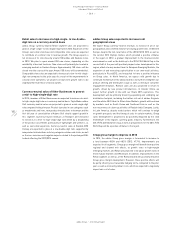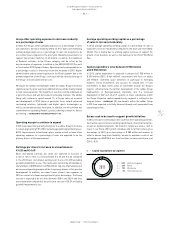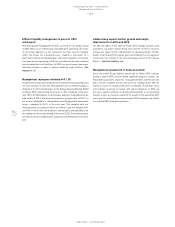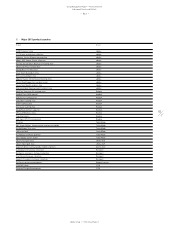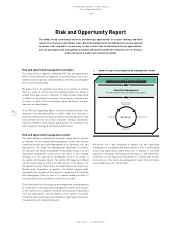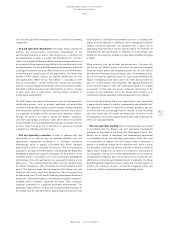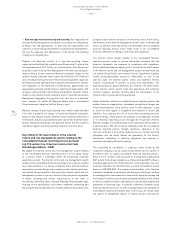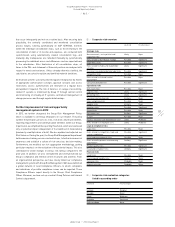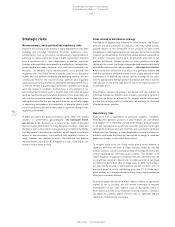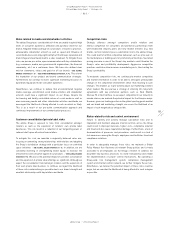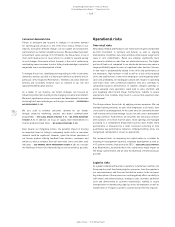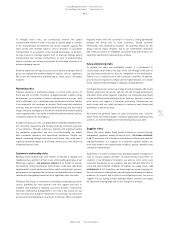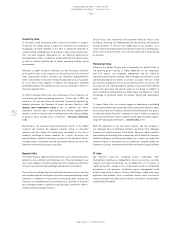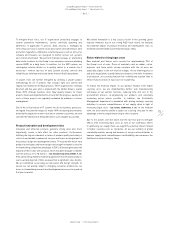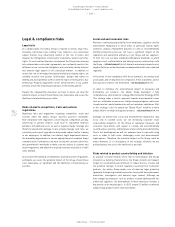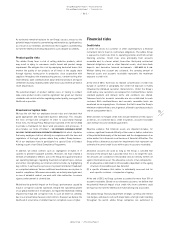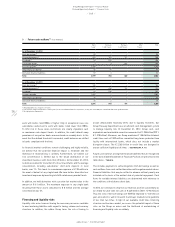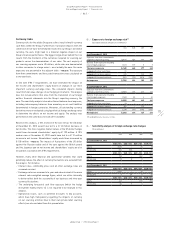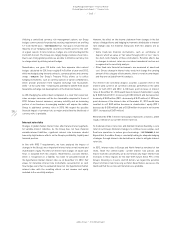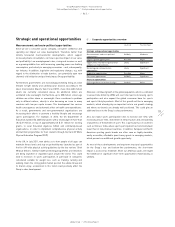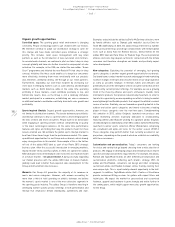Reebok 2012 Annual Report Download - page 192
Download and view the complete annual report
Please find page 192 of the 2012 Reebok annual report below. You can navigate through the pages in the report by either clicking on the pages listed below, or by using the keyword search tool below to find specific information within the annual report.
adidas Group
/
2012 Annual Report
Group Management Report – Financial Review
170
2012
/
03.5
/
Risk and Opportunity Report
/
Operational risks
Consumer demand risks
Failure to anticipate and respond to changes in consumer demand
for sporting goods products is one of the most serious threats to our
industry. Consumer demand changes can be sudden and unexpected,
particularly in our fashion-related businesses. Because industry product
procurement cycles average 12 to 18 months, the Group faces a risk of
short-term revenue loss in cases where it is unable to respond quickly
to such changes. Even more critical, however, is the risk of continuously
overlooking a new consumer trend or failing to acknowledge its potential
magnitude over a sustained period of time.
To mitigate these risks, identifying and responding to shifts in consumer
demand as early as possible is a key responsibility of our brands and, in
particular, of the respective Risk Owners. Therefore, we utilise extensive
primary and secondary research tools as outlined in our risk and
opportunity identification process.
As a leader in our industry, our brand strategies are focused on
influencing rather than reacting to the changing consumer environment.
We invest significant resources in research and development to innovate
and bring fresh new technologies and designs to market
/
SEE RESEARCH
AND DEVELOPMENT, P. 105.
We also seek to enhance consumer demand for our brands
through extensive marketing, product and brand communication
programmes
/
SEE GLOBAL BRANDS STRATEGY, P. 78
/
SEE OTHER BUSINESSES
STRATEGY, P. 92. In addition, we focus on supply chain improvements to
shorten production lead times
/
SEE GLOBAL OPERATIONS, P. 100.
Even despite our mitigating actions, the potential impact of missing
an important trend or failing to adequately tackle shifts in consumer
demand could be significant. However, given the broad spectrum of
our Group’s product offering, feedback from retailers, consumers and
athletes as well as evidence from our own-retail stores and other early
indicators
/
SEE INTERNAL GROUP MANAGEMENT SYSTEM, P. 124, we consider
the likelihood of these risks materialising to such an extent as possible.
Operational risks
Own-retail risks
New adidas, Reebok and Rockport own-retail stores require considerable
up-front investment in furniture and fixtures as well as ongoing
maintenance. In addition, own-retail activities often require longer-term
lease or rent commitments. Retail also employs significantly more
personnel in relation to sales than our wholesale business. The higher
portion of fixed costs compared to our wholesale business may cause a
larger profitability impact in cases of significant sales declines. Success
in own retail is predominantly related to the skills and performance of
our employees. High turnover of staff as well as a lack of the required
skills and qualifications of own-retail employees could negatively affect
sales and profitability. An inadequate culture with respect to operating
own-retail stores with commercial expertise may also contribute to
suboptimal business performance. In addition, delayed openings or
poorly executed store operations could lead to sales shortfalls and
also negatively affect brand image. Furthermore, inability to secure
appropriate store locations may result in a worse than expected sales
development.
The Group reduces these risks by applying various measures. We run
multiple training initiatives for own-retail employees at all levels, from
store clerk to top management. At the same time, we constantly monitor
staff turnover and actively manage succession and career development
to reduce attrition. Furthermore, we only enter into new lease contracts
with durations of no more than ten years. Store openings are managed
according to a standardised Group-wide business plan model. Store
performance is measured by a retail scorecard consisting of nine
quantitative key performance indicators. Underperforming stores are
reorganised, remodelled or closed, as appropriate.
Our increased focus on improving our sophistication as a retailer by
investing in management expertise, employee development as well as
in IT systems remains a key priority for 2013
/
SEE GLOBAL SALES STRATEGY,
P. 72. Nevertheless, we believe these risks could have a major impact on
the Group’s performance and we view the likelihood of materialising as
possible.
Logistics risks
As a global company with business operations in numerous countries, the
Group requires well-functioning logistics processes, from the supplier to
our own warehouses and from our distribution centres to the customer.
Any interruption of these processes could negatively affect our ability to
fulfil orders and deliver products, leading to sales shortfalls, additional
costs and deterioration of customer relationships. Inability to secure
transportation or warehousing capacity, errors by employees as well as
malfunctions in IT logistics systems could all disrupt the flow of goods.


